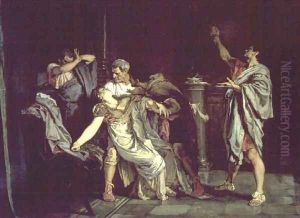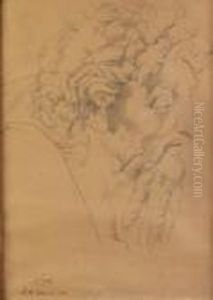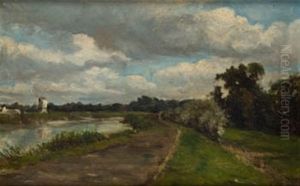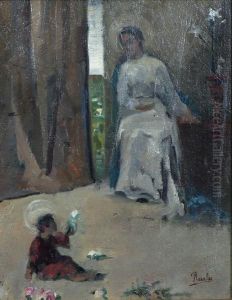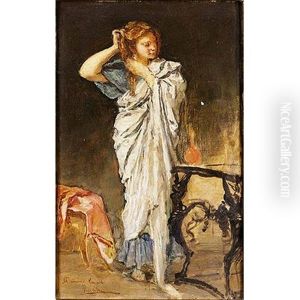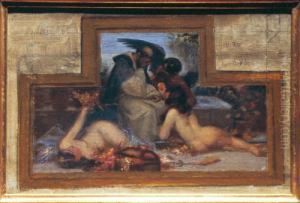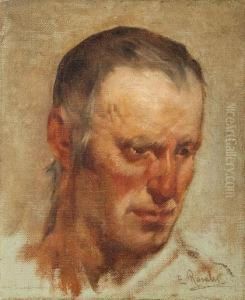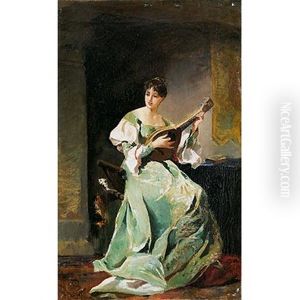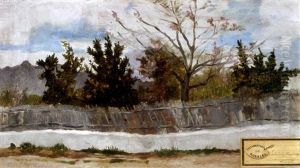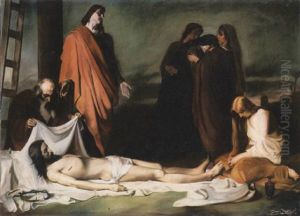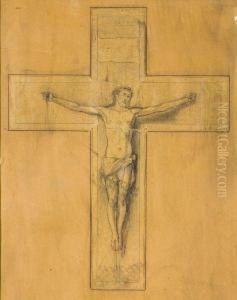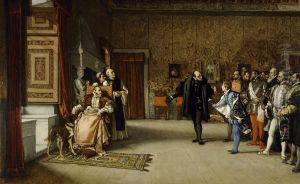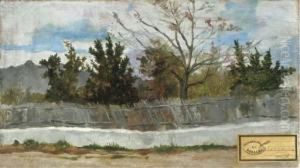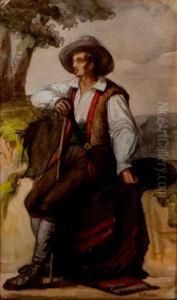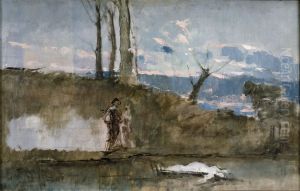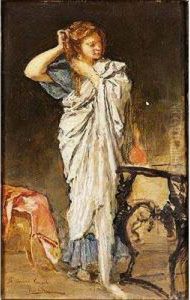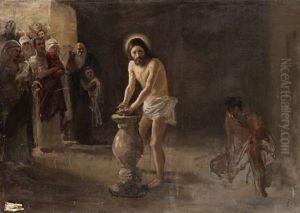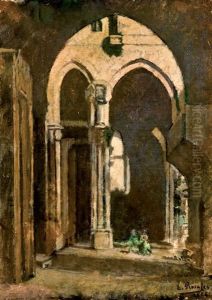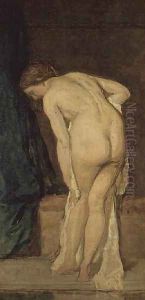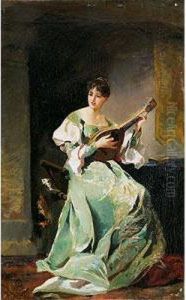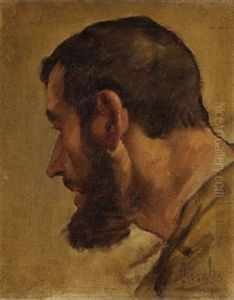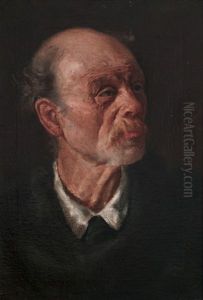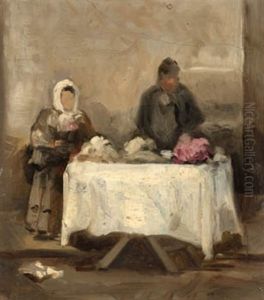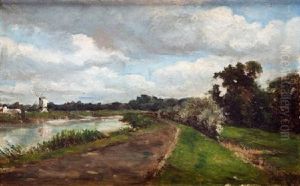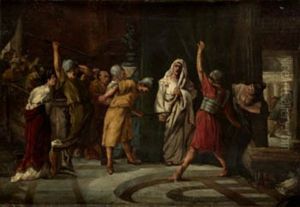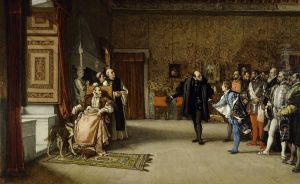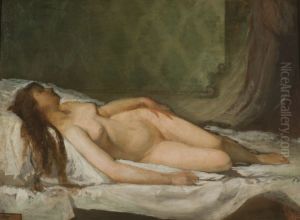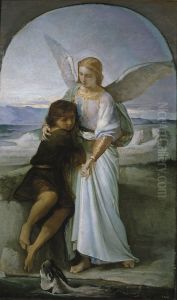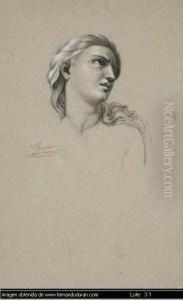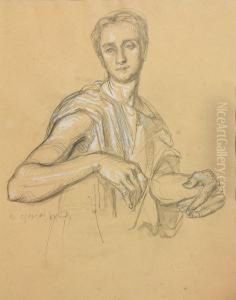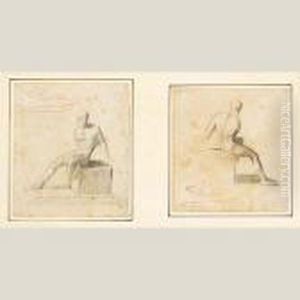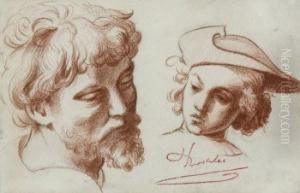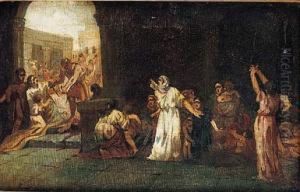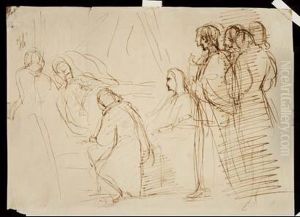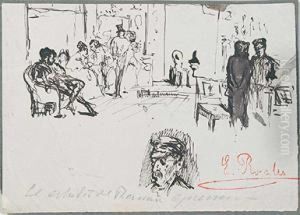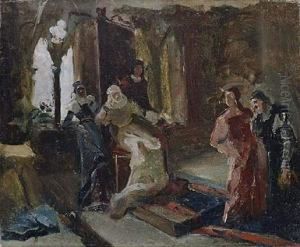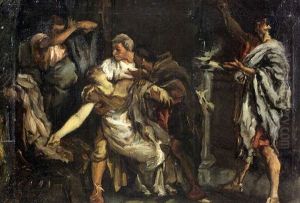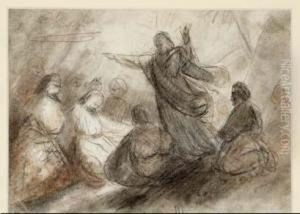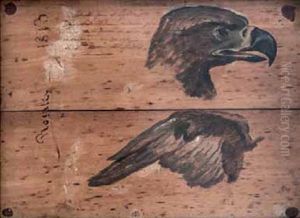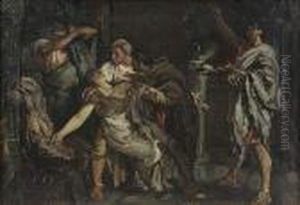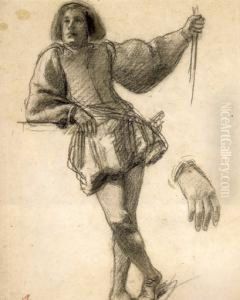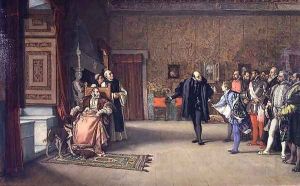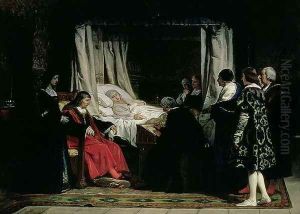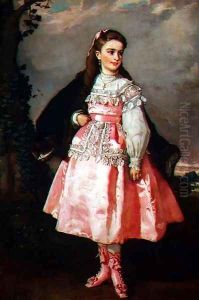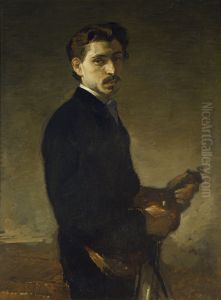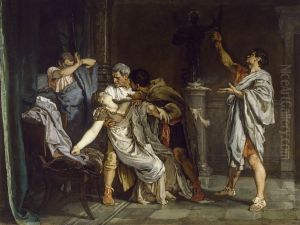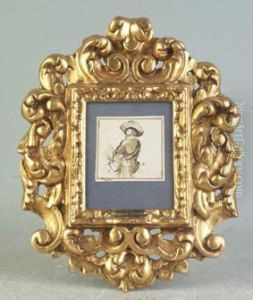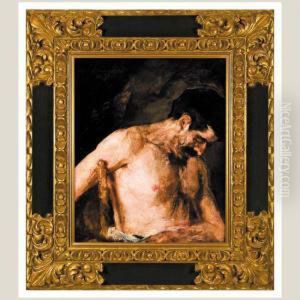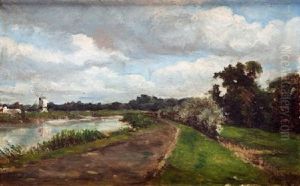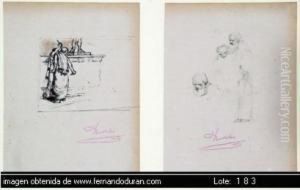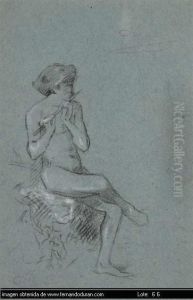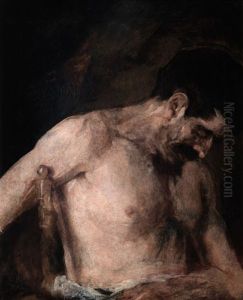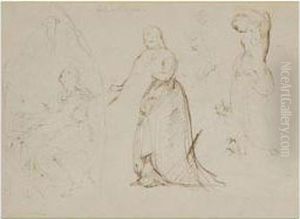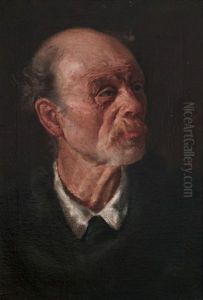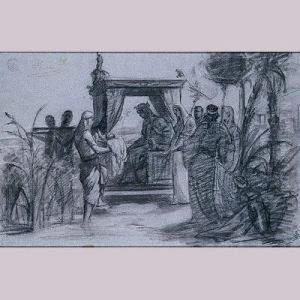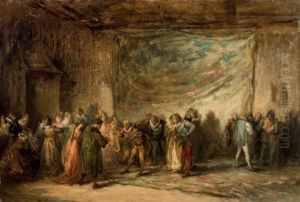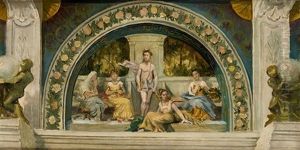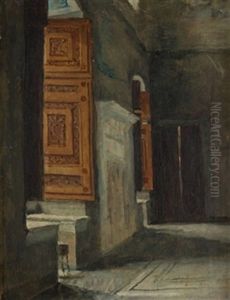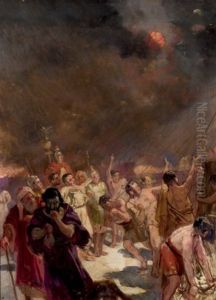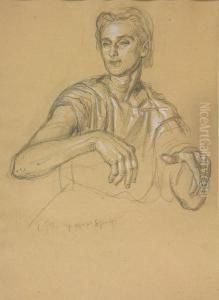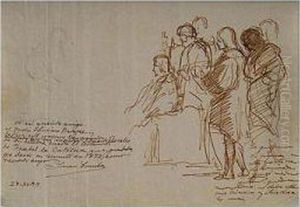Eduardo Rosales Paintings
Eduardo Rosales was a Spanish painter, born on November 4, 1836, in Madrid, Spain. He is considered one of the most significant representatives of the Spanish art scene in the 19th century, particularly known for his work within the Romanticism movement and later for his involvement with the Purismo, a style that sought a return to the purity of the Renaissance masters.
Rosales began his artistic education at the Royal Academy of Fine Arts of San Fernando in Madrid. His early work was influenced by the prevailing Romantic aesthetic, which was characterized by a focus on emotion and individualism. However, his style evolved considerably over his career. In 1857, he moved to Rome, which was then a hub for artists seeking to study the classical and Renaissance masters. The time he spent in Italy had a profound impact on his artistic development, and he began to incorporate elements of the Renaissance into his work, which led to his association with the Purismo movement.
Despite his relatively short life, Rosales achieved significant recognition for his art. One of his most celebrated works is 'Doña Isabel la Católica dictando su testamento' (Queen Isabella the Catholic Dictating Her Will), painted in 1864, which is an exemplary piece of historical genre painting and showcases his technical skill and emotional depth.
Rosales' health was always fragile, and he suffered from chronic illness throughout his life, which often impeded his work. His poor health led him to return to Spain in 1868, where he continued to paint and received commissions from the Spanish royalty and government. Unfortunately, his condition worsened, and he passed away on September 13, 1873, at the young age of 36, in Madrid.
Despite his brief career, Eduardo Rosales left a lasting legacy on Spanish painting. His dedication to historical accuracy in his works, combined with his technical prowess, contributed to the evolution of Spanish art of his time. His works are housed in various prestigious collections, including the Museo del Prado in Madrid. Rosales is remembered not only for his artistic achievements but also for his role in the transition from Romanticism to a more classically inspired style in Spanish art.
